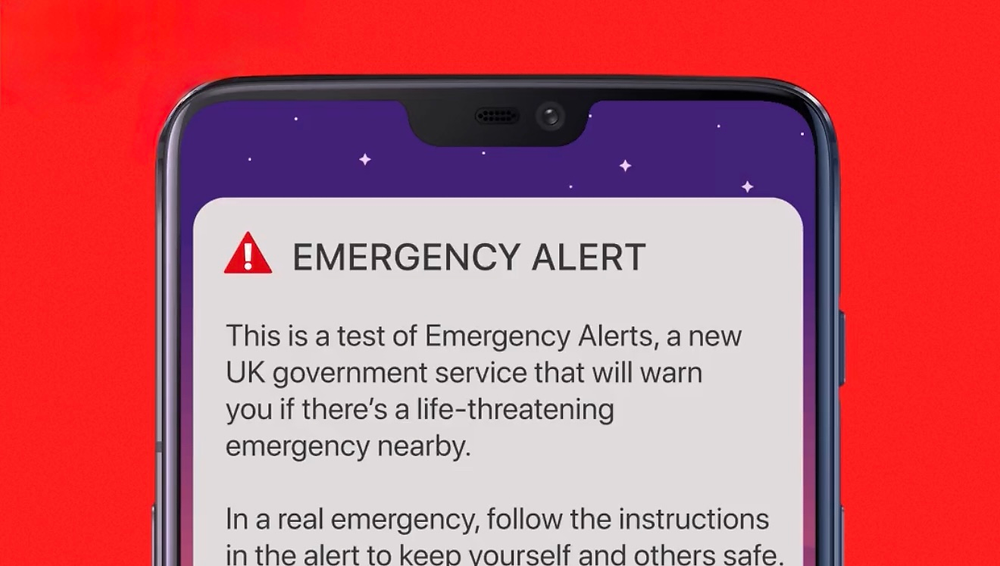
People across Northern Ireland are being advised of the upcoming second nationwide test of the UK Emergency Alert system, set to take place at 3pm on Sunday 7 September.
The system, which delivers urgent safety advice directly to mobile phones during major emergencies, is designed to help protect lives.
Phones connected to 4G and 5G networks will vibrate and emit a loud siren-like sound for up to ten seconds, accompanied by an on-screen message confirming the alert is a test and that no action is required.
The upcoming drill follows the system’s first live deployment in Northern Ireland during Storm Éowyn in January 2025. At that time, UK Government Minister Pat McFadden authorised the alert to issue urgent safety warnings as red weather alerts were in place.
Around 4.5 million mobile phones received the message – the largest-ever live activation of the system.
Hilary Benn, Secretary of State for Northern Ireland, said:
“We saw the Emergency Alert system’s value first-hand during Storm Éowyn in January and this test will be important in making sure we are prepared for future emergencies.
“We need to ensure the system is working effectively so people in Northern Ireland get critical information when lives are on the line.”
What to expect on 7 September
Background: Storm Éowyn
Storm Éowyn, an intense extratropical cyclone, struck Northern Ireland on Friday 24 January 2025. A rare red wind warning was issued by the Met Office for the entire region.
The Emergency Alert was broadcast at around 6pm on 23 January, warning of a threat to life and urging residents to remain indoors.
Public awareness campaign
Ahead of the September test, the government has launched a public information campaign to ensure people are aware it is taking place. The campaign includes communications for vulnerable groups, such as victims of domestic abuse, and features the first national information video in British Sign Language.
The full text of the test message has also been revealed, stating:
“This is a test of Emergency Alerts, a UK government service that will warn you if there’s a life-threatening emergency nearby.
“You do not need to take any action. In a real emergency, follow the instructions in the alert to keep yourself and others safe.
“Find simple and effective advice on how to prepare for emergencies at gov.uk/prepare.”
Why the test matters
The UK Government has committed to testing the Emergency Alert system regularly, in line with international best practice in countries such as Japan and the USA.
The aim is to ensure the technology functions correctly and to familiarise the public with what an alert looks and sounds like.
As well as confirming the alert is only a drill, the message will direct people to GOV.UK/PREPARE, which provides practical advice for households on how to prepare for emergencies.
